| Listing 1 - 10 of 12 | << page >> |
Sort by
|
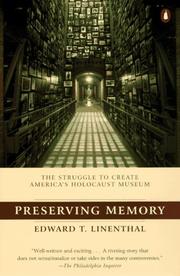
ISBN: 0140245499 0670860670 Year: 1997 Publisher: New York, N.Y. Penguin Books
Abstract | Keywords | Export | Availability | Bookmark
 Loading...
Loading...Choose an application
- Reference Manager
- EndNote
- RefWorks (Direct export to RefWorks)
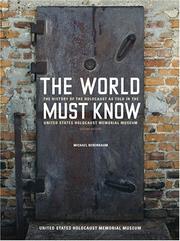
ISBN: 080188358X Year: 2006 Publisher: Washington (D.C.) : United States Holocaust memorial museum,
Abstract | Keywords | Export | Availability | Bookmark
 Loading...
Loading...Choose an application
- Reference Manager
- EndNote
- RefWorks (Direct export to RefWorks)
Periodical
Publisher: Washington, D.C. United States Holocaust Memorial Museum
Abstract | Keywords | Export | Availability | Bookmark
 Loading...
Loading...Choose an application
- Reference Manager
- EndNote
- RefWorks (Direct export to RefWorks)
Book
Year: 2000 Publisher: [Washington, D.C.] : [U.S. G.P.O.],
Abstract | Keywords | Export | Availability | Bookmark
 Loading...
Loading...Choose an application
- Reference Manager
- EndNote
- RefWorks (Direct export to RefWorks)
Holocaust, Jewish (1939-1945) --- Holocaust memorials --- Museums --- United States Holocaust Memorial Museum.
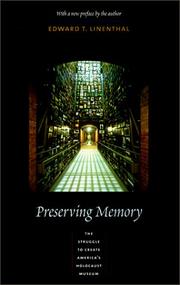
ISBN: 0231124074 Year: 2001 Publisher: New York : Columbia University Press,
Abstract | Keywords | Export | Availability | Bookmark
 Loading...
Loading...Choose an application
- Reference Manager
- EndNote
- RefWorks (Direct export to RefWorks)
Holocaust memorials --- Holocaust, Jewish (1939-1945) --- Political aspects --- United States Holocaust Memorial Museum --- History. --- United States --- Politics and government
Book
ISBN: 0316091359 Year: 1993 Publisher: Boston : Little, Brown,
Abstract | Keywords | Export | Availability | Bookmark
 Loading...
Loading...Choose an application
- Reference Manager
- EndNote
- RefWorks (Direct export to RefWorks)
Holocaust, Jewish (1939-1945) --- Holocaust, Jewish (1939-1945) --- Holocauste, 1939-1945 --- Holocauste, 1939-1945 --- Exhibitions --- Expositions --- United States Holocaust Memorial Museum --- Exhibitions.
Year: 2014 Publisher: [Washington, DC] : [Washington, D.C.] : [Washington, D.C.] : [United States Holocaust Memorial Museum] Government Printing Office, Government Publishing Office,
Abstract | Keywords | Export | Availability | Bookmark
 Loading...
Loading...Choose an application
- Reference Manager
- EndNote
- RefWorks (Direct export to RefWorks)
A complete orientation to the services, collections, symposia, exhibitions, and publications of the U.S. Holocaust Museum. Includes coverage of services of the Holocaust Survivors and Victims Resource Center and The Center for Advanced Holocaust Studies.
Holocaust, Jewish (1939-1945) --- Holocaust, Jewish (1939-1945) --- Holocaust survivors --- Holocaust survivors' families --- Genocide --- Museums --- Services for --- Services for --- Prevention. --- United States Holocaust Memorial Museum.
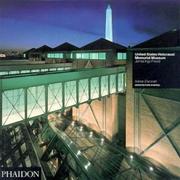
ISBN: 0714842206 9780714842202 Year: 2002 Publisher: London Phaidon
Abstract | Keywords | Export | Availability | Bookmark
 Loading...
Loading...Choose an application
- Reference Manager
- EndNote
- RefWorks (Direct export to RefWorks)
History --- museums [buildings] --- Architecture --- Religious studies --- holocaust --- Freed, James Ingo --- Holocaust memorials --- Monuments de l'Holocauste --- Histoire --- Freed, James Ingo. --- United States Holocaust Memorial Museum. --- Washington (D.C.) --- Buildings, structures, etc. --- Constructions --- United States Holocaust Memorial Museum --- 72 --- Washington DC --- Washington --- District of Columbia --- Verenigde Staten --- Architectuur --- Détail d'architecture --- Monument commémoratif --- Ingo Freed, James --- USA --- États-Unis
Book
ISBN: 1438460783 9781438460789 9781438460772 1438460775 Year: 2016 Publisher: Albany : State University of New York Press,
Abstract | Keywords | Export | Availability | Bookmark
 Loading...
Loading...Choose an application
- Reference Manager
- EndNote
- RefWorks (Direct export to RefWorks)
"Explores how the USHMM and other museums and memorials both displace and disturb the memories that they are trying to commemorate. Figures of Memory examines how the United States Holocaust Memorial Museum (USHMM) in Washington, DC, uses its space and the design of its exhibits to 'move' its visitors to memory. From the objects and their placement to the architectural design of the building and the floor plan, the USHMM was meant to teach visitors about the Holocaust. But what Michael Bernard-Donals found is that while they learn, and remember, the Holocaust, visitors also call to mind other, sometimes unrelated memories. Partly this is because memory itself works in multidirectional ways, but partly it's because of decisions made in the planning that led to the creation of the museum. Drawing on material from the USHMM's institutional archive, including meeting minutes, architectural renderings, visitor surveys, and comments left by visitors, Figures of Memory is both a theoretical exploration of memory--its relation to identity, space, and ethics--and a practical analysis of one of the most discussed memorials in the United States. The book also extends recent discussions of the rhetoric of memorial sites and museums by arguing that sites like the USHMM don't so much 'make a case for' events through the act of memorialization, but actually displace memory, disturbing it--and the museum visitor--so much so that they call it into question. Memory, like rhetorical figures, moves, and the USHMM moves its visitors, figuratively and literally, both to and beyond the events the museum is meant to commemorate"--From publisher's website.
Museums --- Museum exhibits --- Museum visitors --- Rhetoric and psychology. --- Displacement (Psychology) --- Memorials --- Memory --- Public institutions --- Cabinets of curiosities --- Display techniques --- Displays, Museum --- Museum displays --- Exhibitions --- Museum techniques --- Visitors to museums --- Persons --- Museum attendance --- Psychology and rhetoric --- Rhetoric --- Literature --- Psychology --- Displacement behavior in humans --- Defense mechanisms (Psychology) --- Human behavior --- Psychology, Pathological --- Sublimation (Psychology) --- Commemorations --- Historic sites --- Memorialization --- Monuments --- Psychological aspects. --- Social aspects. --- Psychology. --- Social aspects --- Visitors --- Psychological aspects --- United States Holocaust Memorial Museum. --- U.S. Holocaust Memorial Museum --- US Holocaust Memorial Museum --- Holocaust Museum (United States) --- USHMM --- Мемориальный музей Холокоста США --- Memorialʹnyĭ muzeĭ Kholokosta SShA
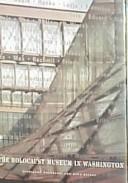
ISBN: 084781906X 0847819078 Year: 1995 Publisher: New York, N.Y. Rizzoli
Abstract | Keywords | Export | Availability | Bookmark
 Loading...
Loading...Choose an application
- Reference Manager
- EndNote
- RefWorks (Direct export to RefWorks)
History --- Architecture --- holocaust --- Public buildings --- Religious studies --- Washington, D.C. --- 866 Herdenking en herinnering --- Holocaust, Jewish (1939-1945) --- Catastrophe, Jewish (1939-1945) --- Destruction of the Jews (1939-1945) --- Extermination, Jewish (1939-1945) --- Holocaust, Nazi --- Ḥurban (1939-1945) --- Ḥurbn (1939-1945) --- Jewish Catastrophe (1939-1945) --- Jewish Holocaust (1939-1945) --- Jews --- Nazi Holocaust --- Nazi persecution of Jews --- Shoʾah (1939-1945) --- Genocide --- World War, 1939-1945 --- Kindertransports (Rescue operations) --- Museums --- Nazi persecution --- Persecutions --- Atrocities --- Jewish resistance --- United States Holocaust Memorial Museum. --- U.S. Holocaust Memorial Museum --- US Holocaust Memorial Museum --- Holocaust Museum (United States) --- USHMM --- Мемориальный музей Холокоста США --- Memorialʹnyĭ muzeĭ Kholokosta SShA --- U.S. Holocaust Memorial Museum, Washington --- Holocaust [Jewish ] (1939-1945) --- Washington (D.C.) --- Jewish religion --- Holocaust, Nazi (Jewish Holocaust) --- Nazi Holocaust (Jewish Holocaust) --- Nazi persecution (1939-1945) --- museumarchitectuur
| Listing 1 - 10 of 12 | << page >> |
Sort by
|

 Search
Search Feedback
Feedback About UniCat
About UniCat  Help
Help News
News